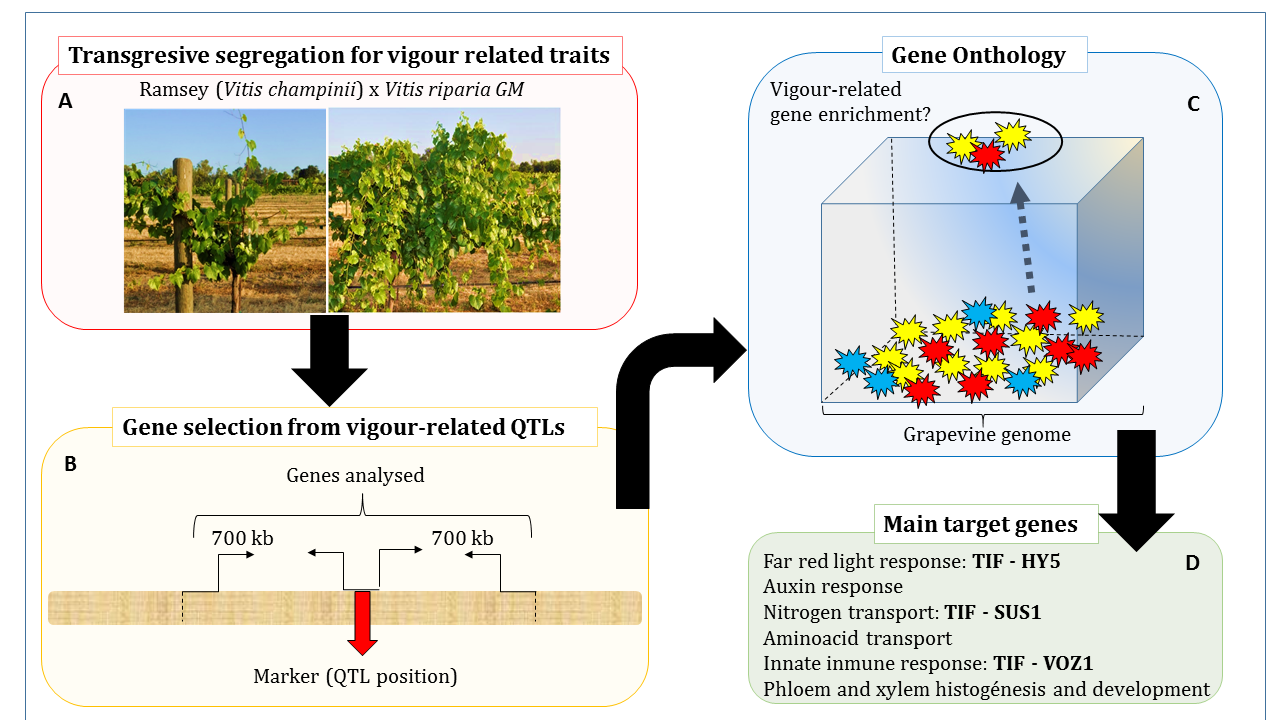Prioritization of vigor QTL-associated genes for future genome-directed Vitis breeding
Priorización de genes relacionados a vigor en Vitis
DOI:
https://doi.org/10.48162/rev.39.036Palabras clave:
proceso biológico, ontología génica, mapeo de QTL, vigor, priorización de genesResumen
Vigor control in grapevine may become especially important under climate change. A better understanding of gene-phenotype relationships is required in order to exploit plant genomics for breeding purposes. This research aims to use quantitative trait loci (QTLs) for vigor identified in the progeny from a cross of Ramsey (Vitis champinii) × Riparia Gloire (V. riparia). Genes located 700 kb up and downstream from each QTL position were interrogated for functional enrichment through ShinyGO online tool, based on the gene ontology annotation of Vitis vinifera PN40024. Key biological processes like phloem and xylem development, cell cycle, response to hormones, amino acid transport, tissue development, sugar metabolism, nitrogen transport, and stress/immune responses, showed functional enrichment. Integral response to light and auxin might be required for fine molecular tuning of vegetative growth in Vitis. Fifty out of 1318 candidate genes were prioritized, reducing their amount to a manageable number of candidates for further directed breeding strategies.
Highlights
- Plant vigor control may become especially important under climate change.
- Genes from various vigor-related QTLs were interrogated for functional enrichment.
- The analysis reduced candidate gene number based on marker proximity and functional enrichment, constituting a suitable shortcut for target-directed genome-guided breeding strategies.
- Three TFs are strong candidates for targeted breeding: TIF - HY5, TIF - SUS1, TIF - VOZ1 potentially enhance growth by relating light response to hormone activation, and then to photosynthesis and morphogenesis.
Descargas

Descargas
Publicado
Cómo citar
Número
Sección
Licencia
Derechos de autor 2021 Revista de la Facultad de Ciencias Agrarias UNCuyo

Esta obra está bajo una licencia internacional Creative Commons Reconocimiento-NoComercial-CompartirIgual 3.0.
Aquellos autores/as que tengan publicaciones con esta revista, aceptan las Políticas Editoriales.










.jpg)




